– Well, good evening everybody, and welcome to the Wisconsin Veterans Museum. My name is Chris Kolakowski. It’s my honor and privilege to be the director here at the Veterans Museum. My background, I came here in 2020, had previously worked for the National Park Service, had run museums for the U. S. Army, and had been director of the General Douglas MacArthur Memorial in Norfolk, Virginia prior to coming here. This is something of a homecoming for me in many ways because I have Wisconsin relatives and Wisconsin veterans in my family tree back to the Civil War and back to the 1840s, so it’s great to be here. This is a great museum. If you haven’t been here to see us, please do come down and see us right in the heart of downtown Madison. Our mission is to preserve, interpret, and affirm the role of Wisconsin veterans in all of America’s wars from 1861, from the Civil War, right up to the present day.
And it’s by keeping those stories alive and keeping that legacy alive we help today’s Badgers and the next generations of Badgers understand and appreciate what Wisconsin veterans have done for this great state and for this great nation. And so it’s with that in mind that we’re gonna talk a little bit tonight about one of those stories that we shouldn’t let pass into the mists of history. And this is something that is very personal to me. I lived in a town that is connected to this story when I was in Kentucky, and we’ll talk a little bit more about that as we go. I’ve also written a book about the campaign that we’re talking about, and it’s a piece of American history that should not be forgotten. What I’m referring to, of course, is the defense of the Philippines and the fall of the Philippines from December 1941, December 8, 1941, until May 6 of 1942. It’s a story of tremendous valor, tremendous sacrifice, tremendous frustration, and in many ways, if you wanna understand how Americans fight with their backs against the wall, Bataan and Corregidor and the defense of the Philippines is a great example of that. And Wisconsin was there. That’s one of the things we talk about at the Veterans Museum. Every veteran’s a story, Wisconsin was there.
This still matters. Wisconsin was there and this still matters today. And that’s one of the things we’re going to explore this evening is some of those Wisconsin stories, specifically a unit from Janesville, that was involved in the defense of the Philippines. And so with that in mind, we’ll go ahead and get going here. And before we actually get into the campaign itself, I want to kind of set the stage, if you will, why is there a battle for the Philippines in 1941 and ’42? What is the Philippines in 1941? And so let’s take a look at this first slide here. This gives you some vital statistics. The Philippines in 1941 was 17 million people overall. Today, Metro Manila, which is the capital of the Philippines, has 17 million people in it. So you can get an idea from that statistic of how much it has grown over the intervening eight years. The Philippines is the largest archipelago in the world.
There are over 7,100 islands, large and small, that make up the Philippine Archipelago. The two largest is the southernmost island of Mindanao and the northernmost island, northernmost large island, which we’ll spend most of our time on tonight, which is Luzon. And I’ll show you a map and give you a bit more of an orientation here in just a minute. Now, one other thing that needs to be mentioned, and I will show you a map of the Pacific, but it’s worth pointing it out right now and introducing this to you, the Philippines in 1941, if you were standing there, you were on U. S. territory because it was a U. S. possession, it was a U. S. commonwealth, very much legally like Puerto Rico is today.
Had been that way since 1934. The United States had taken possession of it from Spain, from the islands, from Spain in 1898, and had promised independence in 1946. When you’re standing in Manila, you’re 7,000 miles from San Francisco, and in 1941 you are about as far away as you can be from the continental United States and still be on U. S. territory. But you’re only 1,500 miles from the Japanese capital of Tokyo. And again, I’ll show you a map shortly, but it’s worth keeping those numbers in mind. Manila, as I’ve already mentioned, is the capital of the Philippines. It was known as the Pearl of the Orient in those days, and was very much a financial, cultural, and transportation center in the Far East, in many ways much like we think of Hong Kong over the last 25, 30, 50 years. So that’s something to be kept in mind as well about the Philippines in 1941.
The two most important kinda leaders, if you will, of the Philippines when the war starts are these two gentlemen right here. And they were known to each other. They went back a long way. They called each other muchachos, brothers. The man on the left is Manuel Quezon, who, for my money, if you’re gonna analogize him anything, he is the George Washington of the independent Philippines. He’s the first president of the Philippine Commonwealth, has devoted his life to making the Philippines independent, first from the Spanish and then ultimately from the United States. He’s been elected, he’s just finishing his first term when the war starts, and then will inaugurated for his second term actually during the campaign in December of 1941. In 1935, he hired his muchacho, Douglas MacArthur, who is the man on the right, and has his own Wisconsin connections, I should mention. Father, of course, being from Milwaukee. MacArthur was appointed to West Point from the city of Milwaukee.
He regarded himself as a Wisconsin soldier. He actually said as much in a telegram we have in our archives in 1916. Douglas MacArthur was hired. He was coming out of being Chief of Staff of the U. S. Army to be the military advisor to the Philippine Commonwealth government. His job, quite frankly, was to build the Philippine military from scratch and get it ready for independence in 1946 so then the Philippines would be able to defend itself. And so MacArthur came out. In fact, on the boat, on the way out, is when he met his second wife, Jean, and they will get married and have a son, Arthur, Arthur MacArthur IV for those of you scoring at home. So these are two of the most important senior leaders in the Philippines in December of 1941.
When the war starts, Quezon will run the civil government, but supreme U. S. authority will rest in the guise of General MacArthur. And so that’s something to be kept in mind as we’re starting to set the stage for the story that we’re gonna talk about here. Now, again, continuing on this theme of context and why does the war start, why do we start shooting at each other in the Pacific in 1941? Let’s start with a map here of the Pacific. First, let me orient you to the map. North is at the top. Here in the northeast corner, you can see Alaska, Canada, United States, North America. And then you come across, the Soviet Union, which today of course is Russia. Where I’m circling with my cursor here is China.
And then to the southwest, the western part of the map, you see the British colony of India. Again, these are all 1941 borders, 1941 political situations. British colony of Burma, French Indochina, where I’ve put my cursor, which today we know as Vietnam, Laos, and Cambodia. Malaya, British Malaya, which today is Malaysia. This area I’m circling with my cursor is the Dutch East Indies, which we know today as Indonesia. New Guinea, where I’ve got my cursor. Australia down here to the south. Variety of islands in between. Here’s the northern tip of New Zealand, just kind of poking in off the southern end of the map. The Caroline Islands, the Marshalls, Marianas right where I’ve got my cursor.
And just to the west of the Marianas, where I’m circling right now, is the Philippine Islands. Directly north of the Philippines, about 500 miles, is Formosa, what we know today as Taiwan. Northeast of there is the Japanese home islands, which I’m tracing here with my cursor. Manila to Honolulu, which is Hawaii, right here, Pearl Harbor, 5,000 miles. Another 2,000 miles from there to San Francisco. Now, question for all of you. How wide is the continental United States from New York to San Francisco? Does anybody have any idea? It’s about 3,300 miles across, depending on how you score it. You can sink the continental United States with room to spare in the Pacific between Pearl Harbor and Manila, okay? So the Pacific is a big area, it’s vast, and that’s something that needs to be kept in mind. Now, why is Japan choosing to go to war in December of 1941? Well, the story of this actually goes back to 1937 when the Japanese invaded China. They thought it was gonna be a quick war, but they got themselves bogged down and they made enemies, not just the Chinese, but the British and the French also began to support Chiang Kai-shek’s China.
As the war drags on, as the Japanese war machine requires more and more resources, embargoes by the Dutch, the British, and the French and the Americans begin to strain the Japanese economy. Then in 1939, World War II begins in Europe with the invasion of Poland. Then in May of 1940, the Germans invade France and the Low Countries, which include the Netherlands, Belgium, and Luxembourg. They beat the French in six weeks. They occupy the Netherlands. And very quickly the Western grip on their colonies here, as Britain stands alone and puts all her energies into winning the Battle of Britain, loosens down here. As a matter of fact, one of the foreign ministers of the Japanese government said that this area where there’s oil, there’s timber, there’s rubber, all the resources necessary to keep a modern war machine going, the blue area, is just a treasure lying in the street, waiting to be picked up. That’s what the Japanese foreign minister said in 1940. And so the Japanese decide to try and take it. So initially they pressure the French to move into Indochina, to let them into Indochina, which they do.
And ultimately, it’s when they occupy the rest of French Indochina in July of 1941 that the final embargoes on the Japanese are made. This gives the Japanese exactly 12 months of oil once the supplies of oil that they have to import are cut off, and it gives ’em 12 months to make a decision from July 1941. Now, one thing that needs to be kept in mind, in case you’re wondering, Japan has no natural resources. That’s true even today. The Japanese home islands have no natural resources. The home islands can feed the population, but everything else for a modern economy and a modern war machine, particularly in 1941 terms, has to be imported. So when oil is cut off, this is a very serious problem for the Japanese and they’re faced with three choices. Number one, do nothing, which is always the option you have, but it’s usually a bad one, and it is in this case. Number two, retreat. Retreat out of China, bow to the Western demands.
Has Japan ever lost a war in her 2,600 year history? The answer to that is no. And that fact alone makes that option unthinkable to the Japanese government. And so that brings us to the third option, which is to seize by force what is necessary and then hold against all comers. And if they’re gonna do that, seize the southern resources area, what is between that area and the Japanese home islands? The Philippines. And in the summer of 1941, Douglas MacArthur has been recalled to the colors after being retired, has been put in command of a new force, U. S. Army Forces, Far East, and reinforcements are beginning to arrive in the Philippines to build up the defenses, build up the air force, build up the ground forces, train the Philippine military and get them ready. And as the months and weeks pass, this will become an ever harder nut for the Japanese to crack. They could leave the Philippines alone and go south. There’s a chance the Americans may not get involved if the Japanese only attack the Dutch and the British.
But if you’re a Japanese strategist or statesman, can you really run that risk? And the answer that they come up with is no. And so that means if they’re gonna go after the Americans, they have to go after the Americans on the first day of the war, and they have to strike the Philippines in addition to Malaya, in addition to the Dutch East Indies, and that also means they have to knock out the other great Allied power leg of the stool, if you will, the U. S. Pacific Fleet at Pearl Harbor. And that’s the genesis of the Pearl Harbor attack on December 7, 1941. I’m simplifying because I wanna get to Bataan itself. This is a whole talk for a whole other time, the path to war in the Pacific. But that in a nutshell is how we get to the war in the Pacific beginning in December of 1941. So this is the Japanese strategy. You can see the red line is their objective.
You can see the other red arrows will be the various offensives that they launch at the beginning of the war. And you can see several of the arrows will be targeted on the Philippines. The Japanese will commit 10 infantry divisions and associated units into the southern offensive. Half of that number will go to Singapore. The next largest contingent, three divisions, in other words, 30% of the number the Japanese are committing go to the Philippines. So this is considered one of the toughest objectives for them. And we’ll talk more about the layout and how it goes here in a little bit. It’s this reinforcement effort that I just talked about, I just alluded to, is how the Janesville 99 get on stage for our story. The Janesville 99 are sent to the Philippines as part of this reinforcement effort to MacArthur. And they arrived the 27 of November 1941.
Now, what is this unit? Where does it come from? It was created in the 1920s. As a matter of fact, here in the museum, just in a gallery just off to my left, we have a photograph of one of the early maneuvers from 1928 of what was known then as the 32nd Tank Company of the Wisconsin National Guard. What each National Guard division had done was they had attached an independent tank company. That’s one of the things– The Army was absorbing the lesson of World War I, and what does the internal combustion engine mean on the battlefield? The tank is infantry support, things of that nature. And so each division, in this case the 32nd Division here, gets one, and that’s where the number 32 comes from. It’s not a coincidence. In 1940, as the Army begins to really, after the fall of France, begins to really ramp up and prepare for a potential engagement with the Axis, they take many of these tank companies and group them into tank battalions, four of them, 191st, 192nd, 193rd, 194th. And Company A of the 192nd, along with Company B out of Maywood, Illinois, Company C out of Port Clinton, Ohio, and Company D out of one of my old residences, Harrodsburg, Kentucky, will be grouped together and will train at Fort Knox and will ultimately go on the Louisiana Maneuvers in late fall of 1941. The 192nd and 194th are sent to the Philippines mostly because George Patton, among others, thinks they’re the best-trained tank companies, independent tank battalions in the Army. In fact, George Patton said, after observing the Harrodsburg men, he said, “As far as I’m concerned, the best way to develop an efficient unit is to find a whole bunch of men from the same town and put ’em together and have them serve together.”
And that’s what’s happened here. All 99 members of this tank company, Company A 192nd Tank Battalion, all have Janesville addresses, or nearby Rock County. So this town, when this company deploys to the Philippines, in many ways, the town deploys as well. And so that’s something that should be kept in mind. That’s true as well of Illinois, Ohio, Kentucky, many of the others as well. The Provisional Tank Group, which you can see there, is amassed in the Philippines. The idea is, is by April of 1942, more tanks will arrive and this will actually be an armored division. It never happens ’cause the war intervenes. Now, in case you’re wondering what they drive, right behind me here is the exact model of M3 Stuart Tank that they drive. It’s known as a light tank, 37 millimeter gun, .30 caliber machine gun at the top, and one of the things they very quickly figure out once the war starts is if you’ll notice all the rivets on the hull, when the Japanese shells start hitting the hull, the rivets have a annoying tendency to pop and start rattling around inside the hull. And it’s actually information based on that battle experience that is then radioed back to the United States that the design is actually changed and they start welding the hull in later models. So that’s something to be kept in mind. But in case you’re wondering what they drive, that’s what they drive in the Philippines. And I should point out as well, the 99 men are not the only Janesville native that deploys to the Philippines at this time. Lieutenant Marcia Gates of the Army Nurse Corps does as well, and she will become one of the famous Angels of Bataan and have her own trajectory and endure Japanese captivity and come home at the end of the war. We’ll talk a little bit more about her at the end as well. So the Japanese strike the Philippines, obviously, as you could tell from the dates just a few weeks after the Janesville men arrive. They are stationed. Here’s the Philippine Islands.
This is Mindanao here to the south, the central part, the Visayan Islands, as it’s known, and Leyte where I have the cursor. And this area right here, where I’m tracing with my cursor, is Luzon. The main Japanese objective is Manila, right where I have the pointer. Manila fronts Manila Bay, which is this little inlet that you can see right here. Stretching across two-thirds of the mouth of Manila Bay is Bataan Peninsula, which is about 60 miles in length, 30 miles wide. And then right in the middle of the mouth of Manila Bay is Corregidor Island. I’ll show you a more detailed map of them a little bit later, but keep those places in mind, Bataan and Corregidor. The main Allied air base is Clark Field in Central Luzon, right where I have my cursor, and that’s actually where the 192nd is stationed when the Japanese show up and start bombing MacArthur’s Air Force on the morning of December 8, 1941. And that’s a whole presentation in and of itself, what happens that day. But suffice it to say, most people that day had only heard of the war as a radio report or a telephone call in the middle of the night.
And there’s an account by one of the Harrodsburg men who’s up in the control tower at Clark Field when Japanese bombers come in, and he turns to a brother officer and says, “It looks like the war’s coming.” And then explosions start happening. “Coming? Hell, it’s here.” And in about an hour’s worth of fighting, despite the anti-tank fire and the anti-aircraft fire from the tanks, half of MacArthur’s air force is knocked out on the first day. Much of the rest of it will be shot out of the skies over the next few weeks. And so very quickly, air supremacy is taken by the Japanese. There’ll be some preliminary landings here in northern Luzon. And then on December 22, the main landing will occur here at Lingayen Gulf, northwest of Manila about 100 miles. And then on Christmas Eve, this arrow is the Japanese landing to the south. Japanese objective, very simple, from north and from south, pincer move right on Manila.
And as far as they’re concerned, there’s only about 25,000 defenders under General MacArthur that are worth anything. In reality, there’s 140,000 Americans and Filipinos defending the islands, 100,000 of them alone on Luzon. And as far as they’re concerned, take Manila, the battle’s over. MacArthur’s strategy before the war: defend on the beaches. Wants to defend there, hold as long as he possibly can. Before the Japanese invasion, and even as the Japanese invasion is unfolding, everybody realizes the importance of the Philippines. And I wanna point this out here because it’s worth noting these opinions. Dwight Eisenhower in December 1941, he said, “The people of China, the Philippines, and the Dutch East Indies will be watching us. They may excuse failure in the Philippines; they will not excuse abandonment.” And then Franklin Roosevelt, the U. S. president, said in December 1941, “The freedom of the Philippines shall be redeemed. The entire resources of the United States stand behind that pledge.” So even before the war ends its first month, U. S. involvement in the war ends its first month, already it’s clear that the Philippines is a prominent battleground, and that’s something, it’s got the attention of Washington. MacArthur’s plan: defend on the beaches. But the problem is the war has started while his mobilization and training program, particularly the Philippine army, is only about a third complete. In fact, a third of the Philippine army was not due to report to its training facilities until January of 1942. So when the Japanese 14th Army, under a guy named Masaharu Homma, who is for my money one of the best generals the Japanese throw at the Americans in the Pacific War, one of the three best army commanders, lands just at the northern end of the map here, and his hard case veterans will run into these half-trained Filipinos.
And yes, they are mostly Filipinos augmented by some Philippine scouts and some men of Company B 192nd. What do you think happens in that first day? The strategy does not work. The Japanese are not thrown back, counterattacks fail, there’s disorganization, and very quickly it becomes clear that the strategy, within 24 hours, the strategy to defend on the beaches has failed. And so MacArthur dusts off an old plan, War Plan Orange-3, and orders the full evacuation of his forces to Bataan and Corregidor. It’s supposed to take two weeks. Think about this, it’s supposed to take two weeks, move 100,000 personnel plus vehicles, plus supplies for five months. And not only do you, you can move them by barge across Manila Bay to Bataan and Corregidor 30 miles, but the vast majority of it have to go by road and rail around the northern edge of Manila Bay along the roads that I’m tracing there with my cursor. I don’t expect you to necessarily have a super detailed grasp of this map, but I want you to absorb the general implications. They’ve thought this out, and War Plan Orange has designated the northern Luzon force as it’s known, it’s a corps-size unit, under the command of a man named Jonathan Wainwright, we’ll spend a little more time with him in a little bit, have given him five separate defensive positions that have been pre-scouted and prearranged. And you can see them, the dashed lines, the heavy dashed lines here on the map.
The whole idea is hold here as long as you possibly can for everything that can get around the northern end of Manila Bay to Bataan to get there. It’s supposed to go two weeks. First day, second day, third day. And by the end of the third day, it becomes very clear it’s not gonna be two weeks because most of Wainwright’s forces are not capable of executing their missions. It’s gonna be one week. And so we have to get as much as we can. Now, the Philippine army, we’ve already talked about. That’s the majority of the forces. But the backbone of Bataan’s defense will be the professional U. S. soldiers, the Philippines scouts, the tanks, and the 31st U. S. Infantry. And the tanks and the Mounted 21st Cavalry of Philippines scouts will become essential elements of this delaying action as the Americans and the Filipinos, as MacArthur’s forces fall back. And as one of the officers would later say, he said, “A lot of times, we went several days without sleep. We had to find gasoline. We ran into a big problem where Philippine bridges were not designed for tanks that heavy.” In fact, in one case, Company A can’t find a bridge. They got the Japanese breathing down their neck just a few miles away. So they have to spike all their guns, destroy the tanks the best way they can, and escape on foot and then pick up replacements later, which is what they end up doing.
However, those tanks the Japanese are able to capture, restore to running order, and will later use in the later stages of the campaign. It’s kind of a bitter pill to swallow, if you will. As one of the Janesville men said, he said, “There would’ve been no Bataan if the tanks hadn’t covered the retreat.” And it was a lonely duty because these tanks were spread out on battle fronts sometimes 15 miles wide. Keep in mind when we’re talking about a company of tanks, each platoon, there’s three platoons to a company, is five tanks. And you might have 15 tanks in a company over a 15-mile front. Think about that. That’s pretty lonely duty, especially, you haven’t even been in the Philippines a month and you’re being asked to do this in a fluid battle situation. But they managed to do it, partly because the Japanese have their own logistic problems as well. Ultimately, the withdrawal proceeds.
They’re finally able to cross and blow this key bridge here at Calumpit just after January 1, 1942, the early morning hours of January 1, 1942, fight a couple of rear guard actions here at San Fernando, and then back here at the northern edge of Bataan. And by January 6, 1942, MacArthur has organized his defenses in Bataan. And this is Bataan Peninsula, and you can see just to the south here at the mouth, Corregidor Island. Channel between the two is two miles. Now, War Plan Orange has also given several defensive positions in Bataan. Bataan has very good defensive positions, very tough, rolling terrain, very good defensive positions, jungle, lots of jungle. And the 80,000, 90,000 defenders will first occupy this line right here at Abucay and running from Abucay to Mauban across the peninsula. But you notice a very important gap around rugged Mount Natib, right here in the center. It was impassable, or so said the Americans. Now, the Janesville men and the rest of the tank battalions, most of these tanks are designed to run about a hundred hours before they need maintenance, before they need new track pads or the engine needs to be replaced, oil changes, things of that nature.
Some of these tanks have run 250 hours during the withdrawal, so a lot of the tanks are withdrawn to a rear area in the lower part of Bataan for rest and refit. They don’t get a lot of that because even though on January 6 and 7, the defenders get on the line here, the Japanese launch their attack into Bataan on January 9. As far as Homma is concerned, he’s won the campaign. This is just a mopping up action. He very quickly gets a real nasty education, because his initial attacks fail. Then he realizes that the American line does not extend across Mount Natib. And so you can call him brave, you can call him crazy. It’s probably a mixture of both. Commander of the 9th Infantry Regiment takes his men up on mountain trails fit only for mountain goats to come in, around, and across Mount Natib here. There’s another officer that does the same thing over here, and they flank out the two American flanks, 1st Corps under Wainwright here to the left and 2nd Corps under Parker here to the right.
The tanks are then committed to try and hold back the Japanese lines, or hold back the Japanese thrusts. There’s some success, but by January 23 it is very clear that this position has been irrevocably compromised. And so MacArthur orders a withdrawal to the final, what’s marked on the map here as the rear battle position, which they will reach on January 26. Who covers that withdrawal? The armor once again provides that. And so the Janesville 99 will be heavily involved in the area I’m circling with my cursor here, covering the Japanese withdrawal under cover of darkness over 48 hours. If you read the accounts, there’s a massive traffic jam right here in the town of Pilar, and everybody expected that the Japanese would swoop in on ’em immediately and destroy large parts of the Bataan defense right there on the road. What stopped that, what kept them at bay, was the 192nd and 194th Tank Battalions. And by December 20, or excuse me, January 26, as MacArthur will write to Franklin Roosevelt, “I am on my final line awaiting general attack.” Now, something that needs to be borne in mind, okay, everything that we’re talking about here, we’re talking about units, we’re talking about a lot of things, but there’s something that needs to be kept in mind. Remember that one week that was cut off the withdrawal amount of time? That meant that not enough supplies arrived.
On that same January 6-7, when the Bataan defense is getting organized, the quartermaster of General MacArthur’s headquarters comes to him and and hands him an estimate of food. For the 26,000 civilians and over 80,000 defenders, there is 30 days’ rations. And even then that’s unbalanced. And keep in mind that there is a cultural aspect to this as well because the Filipino diet is rice-heavy, and there’s only so much rice to go around. This army, on January 7, 1942 goes on half rations. That means they go from 4,000 calories to 2,000 calories a day. On March 1, they go on half rations again. They go down to 1,500 calories a day. And on April 1, they’re eating 1,000 calories a day if they are lucky. What you had for dinner tonight probably was more food than what these defenders will have in a single day during much of this battle.
I want you to think about that. I want you to think about the physical aspect of that. It’s one thing to live on– It’s tough to live on 1,000 calories a day if you’re sitting at a computer all day. But imagine being active in the field. Even if you’re not fighting, you’re improving your position, you may be doing fatigue duty, you’re doing all kinds of different work, different activity that needs to be done. And so the strength of the Bataan defenders literally begins to sap out because of this. Now, does that mean that they don’t try and augment with food as much as they can? Oh, you bet. During this battle, there’s accounts of soldiers going to Manila Bay, going to rivers with grenades, throwing ’em in, and eating the fish that come up. They will hunt for whatever they can get their hands on in the hills. Some of ’em will find tom cats, some of ’em will eat dogs and cats in Mariveles. They’ll eat whatever they can get their hands on. They’ll shoot monkeys. And one of the officers said, “Hey, it tasted real good. Tasted like roast beef.” Another one said, “Yeah, but I felt like a cannibal every time I ate it.” But that’s something that needs to be kept in mind. When we think about military history, we tend to think about these as units. We tend to think about them, as in this case, red arrows, black lines on a map. Never, ever forget that they are people, and the human element and the logistic element in this case really makes a difference. As a matter of fact, one of the defenders at the end would later say, “Bataan was not lost on the battlefield. It was lost logistically.”
And that’s something that should be kept in mind. We’ll come back a little bit to that in a little bit. January 26, the Japanese launch a pursuit, and by the 27 get right into this battle here. They also are able to catch parts of the line before it is organized. And at the same time, Homma is doing something that has been working very well in Malaya against the British, including one of my relatives as a matter of fact: launching amphibious invasions into the rear to try and cut off and sow confusion into the Allied rear. And so there will be a couple of invasions landings here at Quinauan Point, and a little bit down here at the main Allied base here at Mariveles at Longos Kawayan. At the same time, the 20th Infantry Regiment will penetrate right here and get isolated right behind Wainwright’s line, about six, seven miles inside on a jungle-covered hilltop. This becomes known as the Points and the Pockets. And this is an important moment because it takes the Americans and Filipinos two weeks to destroy the landings at the Points and to force the Japanese to withdraw from the Pockets.
But this is also the first time that the Allies have ever surrounded large numbers of Japanese troops. And it is the first time that Americans and Allies realize the Japanese don’t surrender. There are several times where the Japanese have fought beyond all reason. They’ll fire on flags of truce being sent forward to try and ask for their surrender, and they will fight to the last man, and they will kill themselves rather than surrender. And that will happen here at the Points and that will happen up here at the Pockets. Now, in case you’re wondering where our Janesville men are during this, they are involved in both places. Parts of Company A will be involved here at Quinauan Point, and what the tanks will do is the Philippines scouts, the Philippine infantry with U. S. officers, will advance behind the tanks, the tanks will suppress the Japanese in their foxholes, and the Americans will come with a grenade and drop it right in. That’s how they clear Quinauan Point and push the Japanese literally into the sea.
Many of the men will also be involved in the jungle fighting in the Pockets. And if you’ve ever been in some of the wilderness of northern Wisconsin and the real thick foliage with that secondary undergrowth and the narrow trails up there, some of those snowmobile trails, that is an idea of the terrain around the Pockets. I have visited there and let me tell you, you go 10 feet off the road and you might as well be in the middle of nowhere. And so the tanks again and again will attack the Japanese. But as one of the Janesville 99 would say, Forrest Knox, Sergeant Forrest Knox would say, he said, “It was one of those where during the day we would take positions. That night, the Japanese would take them back.” And so it goes back and forth, back and forth, back and forth for 17 days until finally the Japanese break out and return to their lines and concede defeat. Of 700 Japanese that had gone in, 337 break out. The battlefield is so pestilential that the commander, a guy named Jones, Albert Jones, orders everything piled into a clearing and set ablaze lest disease take root. But by February 17, the Points and the Pockets have been eliminated, and that’s the other important point about this.
This is the first Allied ground, major ground victory against the Japanese in the war. And the Janesville 99 helped win it. There’s some proposals to counterattack. Break out of Bataan, liberate parts of the Philippines that have been lost. MacArthur realizes the supply situation is such that’s not really an option, so they must stand and wait for whatever the Japanese will do again. And even if they broke out, the Japanese control the sea and the air, so it’s only a temporary victory at best. The armor at this point is pretty well exhausted. It’s not just food that’s exhausting the tankers. They still have plenty of ammunition, but what are the other two important ingredients that you need to keep these things operating, aside from spare parts? I’m talking about liquids, oil and gasoline. 92-octane gasoline to be precise, which is not in very big supply.
And actually, the bigger issue is not the gas. They can find gas. They can usually borrow it from the Air Corps if they have to. It’s the oil. They’re starting to run out of oil. And so most of these tank units are deployed on the southeast corner of Bataan as beach defenses as February turns into March. Now, as February turns into March, and as March passes along, the defenders of Bataan get some very shocking news to them. And this is a case study that I use a lot to talk about duty. I will always put the mission first. Those sound like very cut-and-dried things.
But when you consider the situation I’m about to explain to you, you realize they’re actually very complex concepts because General MacArthur on February 22, 1942, had been ordered off the Philippines, had been ordered out by direct order of President Roosevelt. Even with the victory at the Points and Pockets, Singapore had fallen on February 15, there were other Japanese offensives that were succeeding around the Pacific, and Bataan and Corregidor were becoming an increasingly isolated pocket behind this flood of Japanese conquest. The Japanese had announced they were gonna hang MacArthur as a war criminal in downtown Tokyo. And there was some question as to whether or not that’s a good idea. Should we give the Japanese this propaganda victory? In fact, Winston Churchill had been there and had been talking about, when he ordered the commander of the British Expeditionary Force off the Dunkirk beaches, because he said, “I didn’t want to give the Germans a needless victory. ” MacArthur probably would’ve died on Bataan and Corregidor, except the Australians needed a senior commander to organize the defense of the continent. And it is the request of the Australian prime minister, plus political pressure here at home, that forces Roosevelt, that causes Roosevelt to act. It didn’t force his hand; it was his choice. And so he orders MacArthur to leave. MacArthur doesn’t wanna leave.
Where’s home? It’s Manila. This army he’s been spending six years building, this defense that he’s been leading. He’s fighting the largest battle Americans have ever fought since 1918, and he’s become an international hero. He doesn’t wanna leave. His staff talks him out of it and says, “You have to go.” ‘Cause MacArthur said, “I’ll resign. I’ll take up a rifle and go fight.” Staff said, “You can’t do that; you have to go.” And that’s the nuance. Do my duty, place the mission first.
What happens when your mission changes midstream? I’ll leave that for you to ponder. And so on March 11, 1942, by PT boat and then ultimately B-17, MacArthur will leave, arrive in Australia, and issue the famous statement, “I came through and I shall return.” When this news strikes the defenders of Bataan, some of them are philosophical. Many of them are, say, one of ’em says, “We’ve lost our luck.” And in several units, it now becomes, “I’m going to the latrine, but I shall return.” The bitter humor of that, I’m sure, shines through even after eight decades-plus. The commanders that take over commanding the Bataan defenses here, about 80,000 men, are Edward P. King, the former Chief of Artillery for Douglas MacArthur, who will command the defenses known as Luzon Force. And then Jonathan Wainwright is promoted to command all U. S. forces in the Philippines and will take over MacArthur’s headquarters in Corregidor.
The Japanese, for their part, after the failure at the Points and Pockets, this is the only part of the Japanese offensive that has actually not accomplished its objective on time, heavily reinforce Homma, and on April 3, Good Friday, 1942, the Japanese will launch a sledgehammer drive right here in the right center of the Allied line. Within 40, 36 hours, excuse me, within three days, they will penetrate to the dashed line that you see indicated here; counterattacks from all sides, including the armor, will be beaten back, and by the night of April 6, it has become clear that the Allied line, the American line across Bataan cannot be restored. And so begins a pursuit battle down the east coast of Bataan. The delaying action here at Limay on April 7, Lamao on April 8, and then pushing down toward Cabcaben here on the evening of April 8. In February of 1942, Franklin Roosevelt had ordered MacArthur to keep the American flag flying on the Philippines, and this is very close to a quotation, “Keep the American flag flying in the Philippines as long as there remains any possibility of resistance. ” That no surrender order remains in effect. But King realizes when his staff tells him on the afternoon of April 8, 1942, the battle lines will be in the hospitals in 48 hours if we don’t do something, the hospitals being between Mariveles and Cabcaben. He realizes what he needs to do. He also realizes because his personnel officers have been telling him this for the last three weeks, that he’s got about one-fifth effective forces.
And by one definition, one-fifth is getting out of your foxhole, moving 25 paces, and firing five aimed shots. That’s combat effective. This army is withering for lack of food, quite literally. In fact, the food was expected to run out April 15, and here it is, the night of April 9. King is facing orders from MacArthur, relayed through Wainwright, to attack, but he makes a morally courageous decision not to do that, and orders the Bataan garrison to surrender. And on the morning of April 9, he will go and meet the Japanese commander. And as he tells his staff, echoing General Lee at Appomattox, and in fact, General King was a son-in-law of one of General Lee’s division commanders, “I would rather die 1,000 deaths.” And on April 9, 1942, the largest surrender in American military history happens with 74,000 Americans and Filipinos being captured with the fall of Bataan. About 2,000 of them escaped to Corregidor, which will fight on. The Japanese are not prepared for this amount of prisoners.
They were expecting maybe 40,000, and they were expecting Bataan to fall in a month. The result is what’s known as the Bataan Death March, where they march 66 miles on this road to Camp O’Donnell in Central Luzon, partly moving by train. Of the 74,000 men that start, 54,000 make it to Camp O’Donnell. 5,000 are left in hospitals, another 5,000 are cleaning up the battlefield, but that means over 11,000, including at least 700 Americans, die on the road out of Bataan. And the first three weeks of captivity actually are more deadly than the entire preceding five months of battle for the defenders of Bataan. This is one of the great atrocities of the Pacific War and the fact that it is downplayed in certain parts of Japan is a geopolitical issue to this day in relations in Asia. So this still matters. Let me give you a couple of Janesville perspectives before we talk about and bring our story a little bit further along. We’ve already heard from William Hauser, that, “There would’ve been no Bataan if the retreat hadn’t been covered from the tanks. ” Forrest Knox, I love this quote about the fighting at the Pocket in early February of 1942.
He said, “Each day the tanks went in hub to hub, maybe 10 feet or less between vehicles.” Imagine five of these things driving at you hub to hub, shooting at you with machine guns and cannon fire. Combined fire, as you can see, and fierce to me is a great understatement. And then John Falconer, I put this quote in here for two reasons. Number one, it’s how most people regarded the surrender. “When the order to surrender came, it was a great relief.” And then the other part of the quote illustrates their food situation. “I found some abandoned trucks and some food. “I had right then one of the best meals I’ve ever had in my life. Creamed peas on toast.” This is an interview he did in the 1970s. I will let you unpack that further. But that tells you something about how the moment still resonated with him, but also the food situation, where creamed peas on toast is one of the best things he’s eaten in a good, long while. Here’s a photograph of some Japanese shortly after the fall of Bataan on the 9 of April. It’s actually taken probably a day or two later from the Army Official History. It’s a U. S. Army Official History captured Japanese photograph. As soon as Bataan falls, the Japanese move artillery and begin to bombard Corregidor over four weeks. The bombardment is so intense by air and artillery that by one measure, it reduces the elevation of the island of Corregidor by 10 feet.
And then on the night of May 5, they land on the western edge of Corregidor. And early the next morning, after some determined but ultimately futile counterattacks by the defending 4th Marine Regiment, the Japanese are spotted with tanks that they’ve been able to ferry across the island, at least two of which were Stuarts. And Wainwright realizes, as he tells one of his subordinates, this thing has to be stopped in daylight because the Americans have no anti-tank weapons on Corregidor. They weren’t expecting tanks. And they’re only a half a mile from the headquarters and hospital area of Malinta Tunnel in the middle of the island. And Wainwright decides it’s time to give it up. And so on May 6, 1942, just outside of Malinta Tunnel, that’s the gates there in the background, and you can see some evidence of the destruction of the bombardment, the way the terrain has been pulverized around the entrance. And this is some of the defenders here. The 13,000 defenders of Corregidor surrender on May 6, 1942. And then they will be shipped to Central Luzon, at Cabanatuan prisoner of war camp, and then ultimately over the next weeks the rest of the islands will ultimately capitulate as well.
And so with that, the darkness of Japanese occupation passes over the Philippine Islands. What happens to the Janesville 99? What happens to these prisoners of war? Here’s the Janesville 99 FEPOW, Far Eastern Prisoner of War. It’s actually more of a British term, but it applies here as well. The Janesville 99, the first intimation that most of the families in Janesville have, aside from a few scattered letters that got out in January and February of 1942, is when they get telegrams, and there are quite a few that start showing up in Janesville all at the same time. “The War Department regrets to inform you that your,” name, rank, serial number, the whole bit, “is missing and presumed captured as of the 9 of April, 1942.” Think about that for a second. There’s no definition. Missing could cover anything. It could cover any possible fate. But that’s what most of the Janesville people get.
Many of them don’t hear a further word for a year or more. Some of ’em don’t hear about their tankers until 1945, either from Graves Registration or they show up again at the end of the war. And sometimes when they do hear word, it’s not a letter. The Japanese would only allow one postcard about yea big, and it was forms that you checked. “I am held in this prison camp. My health is either good, bad, excellent.” Nobody ever checked bad because there’s a Japanese guard looking at them, and you will check your health is good. And a short 50-word message. If you’re lucky, that’s what you hear. There are some people, not necessarily with the Janesville men but with some other Bataan captures, some wives believed that their husbands are dead, not hearing anything.
And so when their husbands show up in the repatriation ships in 1945, they’re standing there on the dock looking pretty sheepish and have a bit of a legal issue to settle out. That happened more often than you probably want to admit. Of the 99 that went to the Philippines, 95 were captured. Another five had been either killed in action or evacuated in one of the last medical ships to leave. 35 of them, 35 of the 95 came home, as did Marcia Gates. The others died of multiple causes, either on the Bataan Death March on the road out of Bataan, they died of disease in prisoner of war camps, overwork, they died in hell ships packed together sometimes. They were unmarked, so sometimes at the hands of unknowing American submarines. Company A’s commanding officer at the end, at the surrender was Captain Fred Bruni. He was born in Monroe and later lived in Janesville. Any of you ever seen the movie The Great Raid in 2005? If you haven’t, go watch it.
It’s very powerful. They depict at the very beginning a massacre that actually happened on the island of Palawan, where the Japanese herded 123 Americans into air raid shelters, doused ’em with gasoline, and threw in a match, and then machine gunned anybody that tried to escape. That included Fred Bruni and several other Janesville men. They’re buried today. If you wanna go visit their graves, you can go to Jefferson Barracks National Cemetery in St. Louis. The remainder of those that died are commemorated either in the Manila American Cemetery, and of course there’s a monument in downtown Janesville today. So that’s what happens with them. And I will tell you, being the grandson of a prisoner of war from the Polish army that was held in the Soviet Union for three years, these men, and having met some of these men and some of the of the men from Harrodsburg and some other Far Eastern prisoners of war, they lived with this every single day of their life, and they lived with it until the day they died. And in many ways, their families have been marked by that experience as well for generations in the future. And I speak from personal experience, a very similar experience on that point.
So as I wrap up, I wanna give you some last words. I wanna give you some things to think about as we think about this story and we try and provide some context. I’ve had the shortest amount of time, I’ve had a lot of history I’ve had to cover, but I wanted to give you an overview because this is an important story, it marks an important Wisconsin community, and it is a key part of the heritage of the Wisconsin National Guard and service to country. And we should never forget. When we think about the Wisconsin National Guard in World War II, it’s often the 32nd Division, the Red Arrows in New Guinea and beyond. And that’s great. They did fantastic work. But we should never forget the men from Janesville. And this is an important part of our state’s legacy and participation in World War II.
And these last words, to me, are the best tribute not just to them, what they did, what they went through, but also to their comrades on Bataan and Corregidor. MacArthur said this, 10 April, 1942, “Bataan force went out as it wished, fighting to the end with its flickering forlorn hope. No army has ever done so much with so little and nothing became it like its final hour of trial and agony.” And then Franklin Roosevelt, just before Corregidor’s surrender, wrote this to Jonathan Wainwright. And all through his captivity of three years until 1945, until the war’s end, Jonathan Wainwright kept this in his pocket. And every time he needed strength, he read this. “The American people ask no finer example of tenacity, resourcefulness, and steadfast courage. The calm determination of your personal leadership in a desperate situation sets a standard of duty for our soldiers throughout the world. In every camp and on every naval vessel, soldiers, sailors, and Marines are inspired by the gallant struggle of their comrades in the Philippines. The workmen in our shipyards and munition plants redouble their efforts because of your example. You and your devoted followers have become the living symbols of our war aims and the guarantee of victory.” And to me, that’s the last word on what the Janesville story means, what the Bataan story means, and one of the many reasons that we should remember what they did and what they went through and why it deserves our honor and respect. So I’d like to thank you all for your attention and I appreciate you listening. Thank you.
[audience applauding]
Search University Place Episodes
Related Stories from PBS Wisconsin's Blog

Donate to sign up. Activate and sign in to Passport. It's that easy to help PBS Wisconsin serve your community through media that educates, inspires, and entertains.
Make your membership gift today
Only for new users: Activate Passport using your code or email address
Already a member?
Look up my account
Need some help? Go to FAQ or visit PBS Passport Help
Need help accessing PBS Wisconsin anywhere?

Online Access | Platform & Device Access | Cable or Satellite Access | Over-The-Air Access
Visit Access Guide
Need help accessing PBS Wisconsin anywhere?

Visit Our
Live TV Access Guide
Online AccessPlatform & Device Access
Cable or Satellite Access
Over-The-Air Access
Visit Access Guide
 Passport
Passport

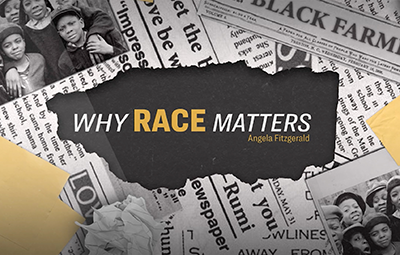




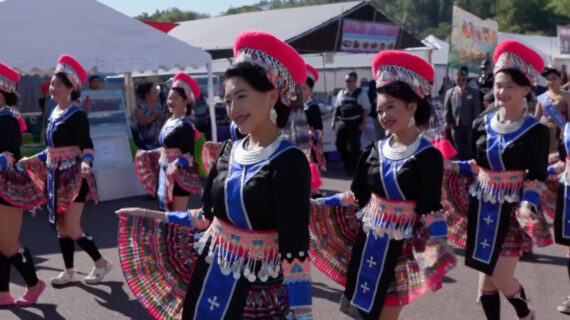



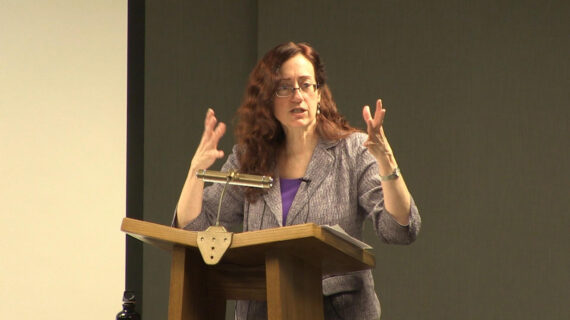
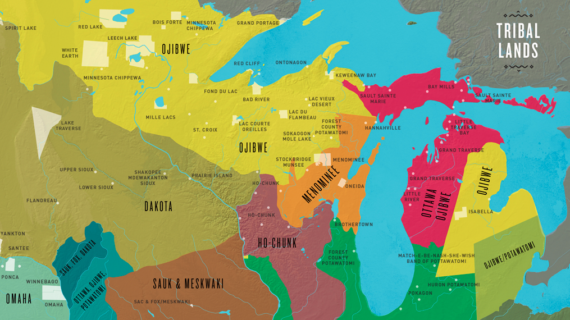
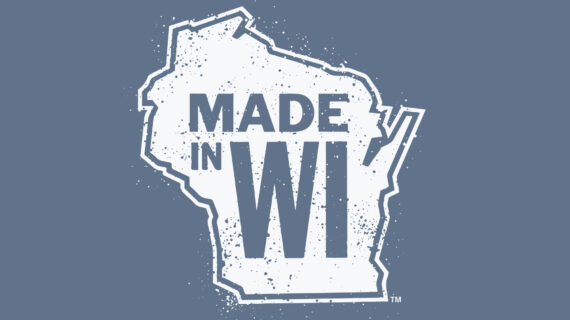

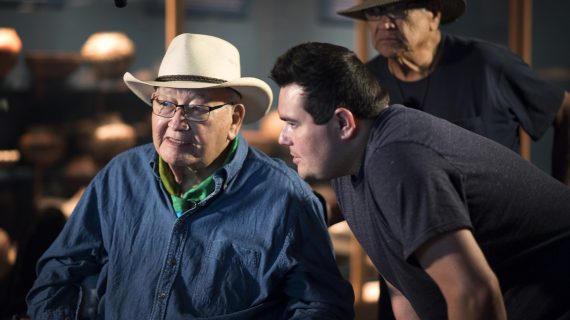



Follow Us